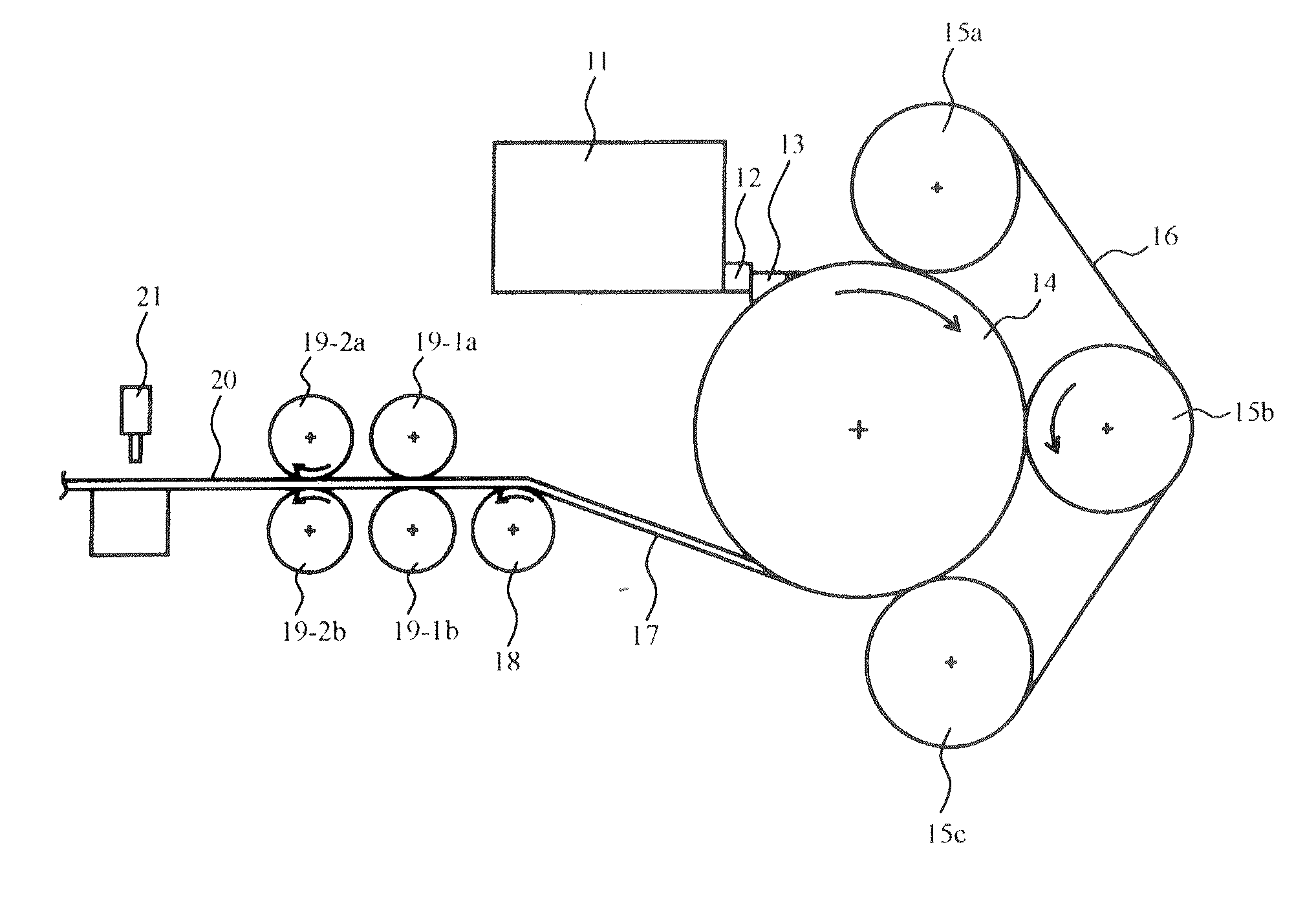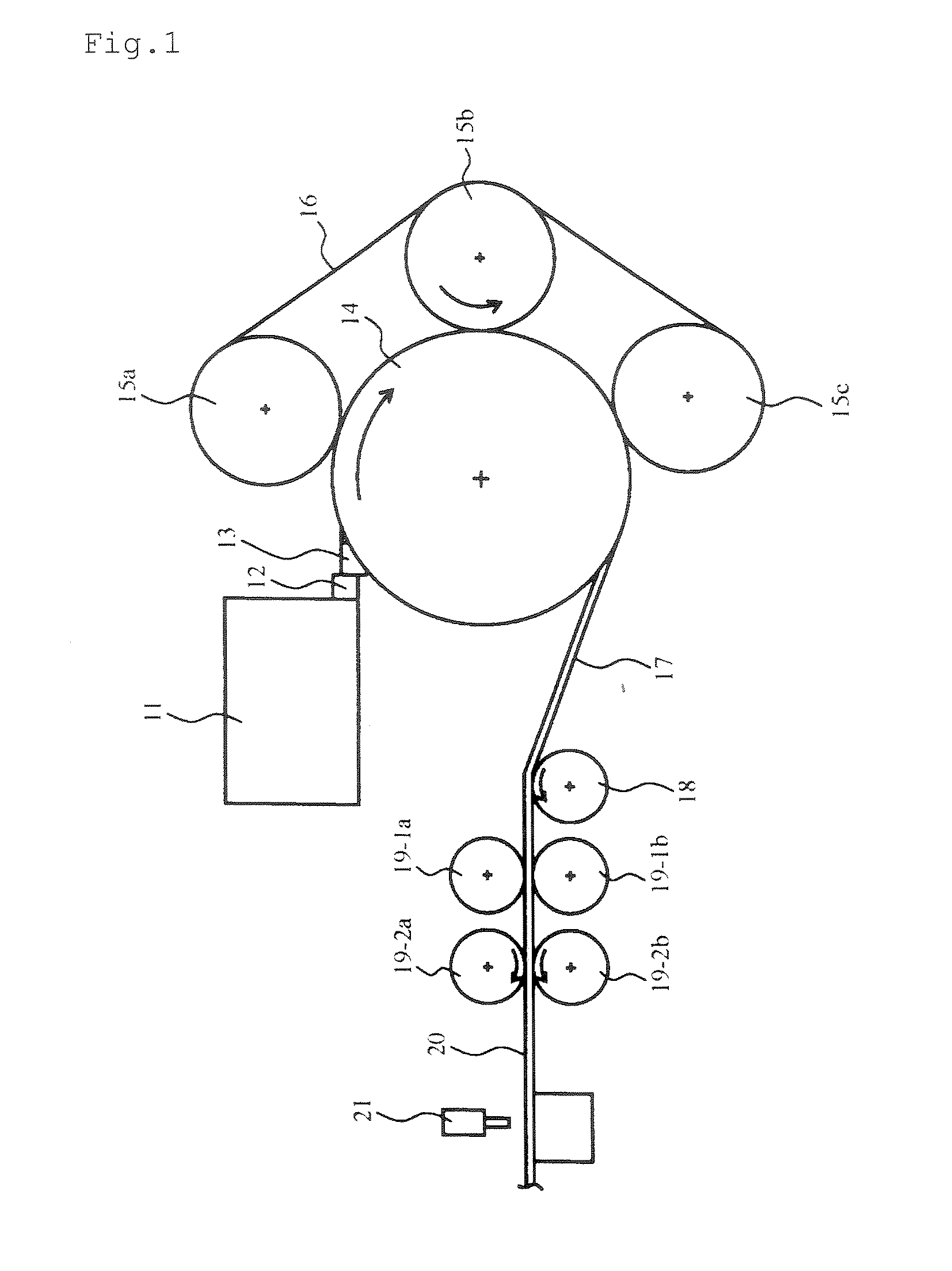Method for producing manganese dry cell negative electrode zinc material
a technology of dry cell and negative electrode, which is applied in the direction of primary cell electrode, cell components, electrical equipment, etc., to achieve the effect of reliable quality of non-lead-added anode zin
- Summary
- Abstract
- Description
- Claims
- Application Information
AI Technical Summary
Benefits of technology
Problems solved by technology
Method used
Image
Examples
embodiment
3rd Phase of Embodiment
[0054] Following explains 3rd phase in manufacturing method of this Invention.
[0055] In this method a number of individual molds are provided and each mold is pour filled with the molten zinc alloy, which mold with molten in it is dipped into a water tank with cooling water below 40° C., whereby the molten is rapidly cooled and solidified. Rolling the molded material in a heat from 100 to 190° C. to sheet (s), which sheet is punched or then deep-drawn to be zinc plates or zinc cans for manganese dry batteries. For this method such a system as for the phase 1 or 2 is unnecessary. That is an advantage of manufacturing with less capital investment for machinery and equipment.
embodiment example
[0056] Alloy composition: 100 kg pure zinc and different additives for the embodiment examples 1 to 9 and the comparative examples 1 and 2 as indicated in the Table 1 herein below. Manufacturing system as of Drawing 2 equipped with 100 cm diameter disc. [0057] Disc diameter: 100 cm [0058] Molten zinc alloy temperature in the mold: 450° C. [0059] Thickness of molded zinc alloy material: 15 mm [0060] Cooling water temperature: 32° C. [0061] Temperature of the molded zinc alloy material on entering to the rolling system: 110° C. [0062] Number of twin roller: 2 pairs
[0063] A test was conducted on the zinc pellets punched out of the zinc sheet made by foregoing method to verify if they are useable without quality problems.
[0064] A number of R20 manganese dry batteries were fabricated using above-mentioned zinc pellets and evaluation was done on the batteries.
[0065] First cathode compound was prepared by dry mixing of cathode active material, manganese dioxide for major ingredient, and...
embodiment example 34 to 48
Disc Diameter, Embodiment Example 34 to 48
[0120] Sash-state materials were manufactured using manufacturing system as of FIG. 2 from zinc alloy prepared by adding 0.3 mass % bismuth to 100 kg pure zinc. Casting machine disc diameter was varied under casting condition shown in Table 6. Finally, appearance and cross sectional crystal condition of the manufactured sash-state materials and zinc sheets were checked. Concerning thickness of molded sash-state material, the thinner it is, the better it is for flexibility not easily breakable, however, compression ratio must be counted at least 30% for the rolling process and the thinness is limited by the thickness of zinc pellets to be punched out of a zinc sheet after rolling. If the molded material in sash-state is thick, it may happen that the material breaks around the exit of the casting machine, and in this case it is advisable to use a disc of large diameter and to arrange the material so as it may not curve very much in coming out ...
PUM
| Property | Measurement | Unit |
|---|---|---|
| Temperature | aaaaa | aaaaa |
| Temperature | aaaaa | aaaaa |
| Temperature | aaaaa | aaaaa |
Abstract
Description
Claims
Application Information
 Login to View More
Login to View More - R&D
- Intellectual Property
- Life Sciences
- Materials
- Tech Scout
- Unparalleled Data Quality
- Higher Quality Content
- 60% Fewer Hallucinations
Browse by: Latest US Patents, China's latest patents, Technical Efficacy Thesaurus, Application Domain, Technology Topic, Popular Technical Reports.
© 2025 PatSnap. All rights reserved.Legal|Privacy policy|Modern Slavery Act Transparency Statement|Sitemap|About US| Contact US: help@patsnap.com



